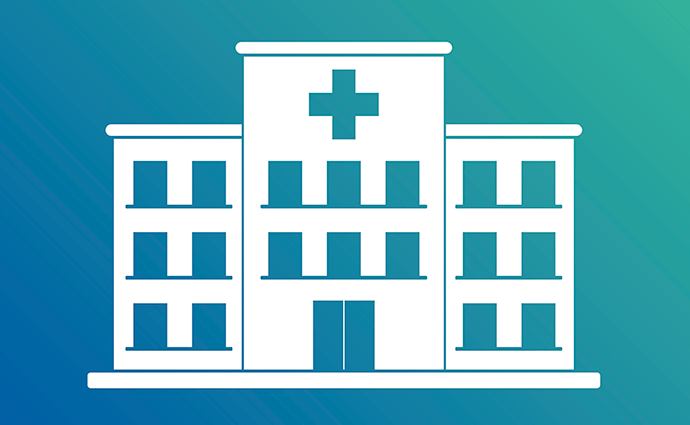Hospital-Administered Medication Boosts Healthcare Spending
When administered at home or in a provider’s office instead of at the hospital, specialty drugs can result in $4 billion less in healthcare spending.

Source: Thinkstock
- Specialty drugs, which often receive the brunt of healthcare spending deprecation, may be able to decrease healthcare spending by $4 billion per year if administered at the right locations, a UnitedHealth Group (UHG) report found.
Over the course of the past six years, specialty drug spending per person grew by 14 percent each year, UHG discovered. The number seems to justify specialty drugs’ responsibility for a significant portion of the healthcare spending increase.
PwC’s medical cost trend report released in June projected that retail prescription drug spending would continue to increase up to six percent in 2027. And while industry experts are pointing to new value-based payment models for specialty drugs, the UGH data suggests an even simpler solution. In UHG’s report, the major payer detailed the benefits of changing where patients receive their specialty prescription drugs.
“Compared to independent physician offices, hospitals charge more for specialty drugs and their administration, whether treatment occurs in a hospital or in a hospital-owned physician practice,” the study found.
UHG has been researching the potential healthcare spending cuts that could result from addressing four areas of healthcare spending: avoidable hospital emergency department visits, hospital prices, specialty prescriptions, and high-value physicians.
READ MORE: FTC Approves UHG-DaVita Merger Settlement in Nevada
In this report, the payer studied five chronic diseases whose medication therapies contribute over 75 percent of the costs of administered drug healthcare spending. For these conditions, UHG discovered that for members of private health plan, the cost could be reduced by $16,000, or from $53,000 to $37,000, each year by administering the treatments in the patient’s home or at their primary care provider’s office.
In total, this could translate to anywhere from 33 percent to 52 percent healthcare savings.
On a micro-level, multiple sclerosis treatments could save $37,000 for four months of administering the drug.
Immune deficiency treatments administered at home or in a provider’s office for six months would save $32,000.
For those suffering from rheumatoid arthritis, five months of administering the drug outside of the hospital could save them $28,000.
READ MORE: Driven by Prices, Medical Cost Trend Increases 6%
Inflammatory bowel disease patients might save $21,000 after treating for five months outside of the hospital.
Chemotherapy treatments would cost $16,000 less over the course of four months.
“For certain administered specialty drugs, treatment at home can improve patients’ physical and mental wellbeing and reduce disruption of work schedules and family responsibilities, all without increasing the likelihood of adverse drug events or side effects,” the report explained.
This most recent report builds on UGH’s efforts to uncover four key areas for achieving overall healthcare savings. Since March, the payer organization has published three reports outlining cost savings due to reduced emergency department (ED) visits, ED prices, physician workflows.
In July, UHG reported on avoidable ED visits.
READ MORE: Federal Judge Strikes Down New Drug Price Transparency Rule
UHG found that two-thirds of privately insured Americans’ ED visits are avoidable. Using lower-cost care options where appropriate, like a primary care provider, members could reduce the national healthcare spending by $32 billion.
Another possible solution to avoidable ED costs is to encourage preventive care, as seen in Medicare Advantage’s success over fee-for-service models in decreasing unnecessary hospitalizations.
A third UHG report within the last year focused on the topic of hospital prices in the ED and beyond.
The report stated that from 2013 to 2017 hospital prices increased by 4.5 percent, which is double physician price increases of 2.5 percent in the same time period.
If hospital prices decreased to physicians’ prices from 2020 to 2029, the report suggested, the healthcare industry could save approximately $250 billion, although it is fair to point out that hospital operational costs are much higher than those of physician offices.
The fourth report found that physicians who expend less to deliver high quality care could reduce healthcare spending by $710 billion from 2019 to 2028. UnitedHealth Group’s UnitedHealth Premium program’s high-value physicians treated 41 percent of the payer’s patients, but they contributed 37 percent to the program’s overall healthcare spending.
Other payers are also recognizing the challenge laid out in the UHG report on specialty drug spending. And they are innovating new solutions to diminish financial barriers restricting members’ access to care.
Most recently, Cigna revealed its new payment method to cover gene therapy with zero out-of-pocket costs for the consumer. The model relies on Cigna’s industry consolidation with Express Scripts using its medical benefits management company eviCore and specialty pharmacy and distributor Accredo and CuraScript SD to reduce healthcare spending.
Whether by encouraging members to receive their treatments in a lower-cost environment or collaborating with other industry players to decrease out-of-pocket costs, the efforts and innovation of major payers like UHG and Cigna will prove critical to decreasing specialty drug and overall healthcare spending long-term.
